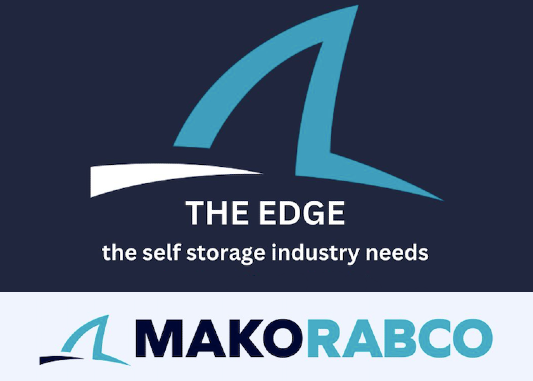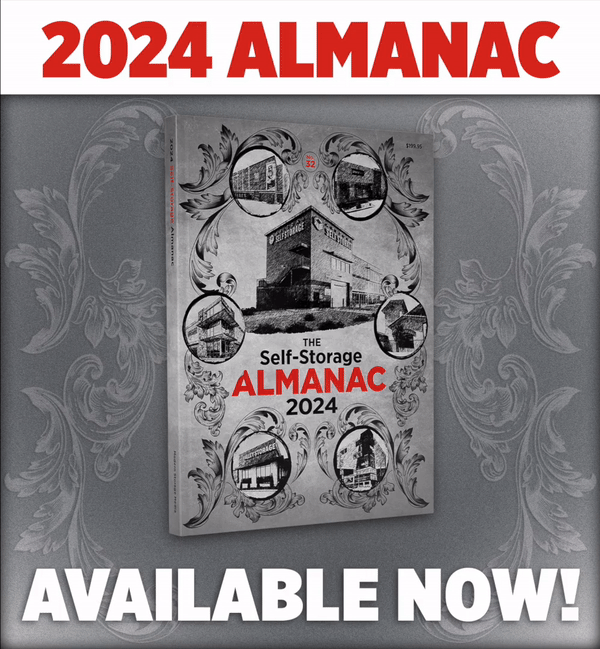Self-Storage Design: Balancing Functionality, Aesthetics & Cost
In an era where self-storage facilities are no longer merely practical spaces but integral components of urban landscapes, the importance of design has never mattered more. The fusion of functionality and aesthetics that brand modern facilities and shape customer experiences can define a facility's success. The former utilitarian approach to simply storing customers’ belongings has evolved. Self-storage facilities are now architectural statements, aiming to garner both customer and community appeal. Here are six tips to help you achieve that objective.
1. Choose a location that showcases a beautiful architectural façade and landscaping.
Being on a busy road with high visibility ensures that the community sees the careful design choices and beautiful aesthetic. Comprehensive space optimization techniques highlight space efficiency, taking into consideration data from market analysis, local zoning laws and regulations, and budget to create highly functional site layouts while also maximizing potential profits.
After determining a facility’s target rentable square footage and unit mix, creatively applying those factors to a site’s layout will begin to establish functionality. Further applying local zoning regulations, site flow dynamics such as traffic and parking, and of course budget, will also have a significant impact. Will a site have two-way traffic or only one-way traffic with separate entry and exit gates? Does the site need to accommodate RV parking? Is snow removal a concern? Is it more cost-effective to have 20-, 30-, or 40-foot-wide non-climate-control buildings? It is easy to see how each of these decisions can have a drastic bearing on the overall design, and success, of a facility.
2. If the civil engineer has not designed at least 10 self-storage facilities, make sure the layout is reviewed by a self-storage expert.
There are still site plans designed with the office behind the gates. Often, incorrect building widths or unit layouts will require one extra unnecessary hallway, which reduces the rentable square footage. Industry digital and technological advances also impact functional design. From security integrations, biometric and smart access control systems, and smart lock technologies, the safety of customer’s belongings must align with the overall functional design characteristics.
Access system keypad placement, for example, can be tricky to get right at your entry gate. The wrong spacing can make it nearly impossible for larger vehicles to get close enough to the keypad to enter the code without having to completely exit the vehicle, and then also navigate through the gate’s opening. Inadequate bollard placement can leave a facility susceptible to costly damage. Smart technologies whose infrastructures are not a part of the early design process can lead to costly revisions and change orders. Worse, they may not serve customers well if their placement is not intuitive or convenient. Further considerations for the serviceability of technologies, utilities, etc., are also critical throughout the facility’s design.
3. Not all the latest technology should always be used.
Great strides have been made in individual door alarms, but the decision to add them to the design has to be made on a case-by-case basis due to their cost. Eco-friendly building materials and renewable and highly efficient energy solutions may offer monetary benefits and brand definition to customers who share similar values of sustainable building and business practices. As customers continue to be increasingly aware of the environmental and community impacts of the services they utilize, it is important to consider and incorporate pro-ecological design elements. Often, these design choices can lead to establishing customer trust and help to build a positive reputation.
4. Use “bollard keypads.”
They present better than a gooseneck with two bollards and offer a cost savings of four bollards. Functional design, however, is only half of the design process. Aesthetic architectural designs also directly impact the customer experience, albeit in a different way. Visual appeal from building façade, color scheme, branding, landscaping, and material choices all come together and make an impression on customers. In visual design, the goal is to provide each customer with that “just right” feeling. It is not one size fits all, however, so striking a balance is paramount. You only get one chance at a first impression, and your success hinges on making an impact. Often,the exterior office area facing the street can have extra curb appeal with the balance of the site being the standard metal self-storage building.
5. Consider a vacuum and a 50-foot flagpole with a 10-by-15 American flag.
These are two ways to attract the attention of drive-by traffic. Striking or impactful visual design choices must also be highly functional. A flooring choice that is beautiful but nearly impossible to keep clean, for example, will not serve the facility well. Logos or graphics that lack contrast with the surface they are placed on can be hard to read. Large glass windows adjacent to screens can cast glares that make them nearly impossible to use. A counter that is open on both ends (think an island vs. a peninsula) can make it much easier for office staff to come out from behind the counter and assist customers. Again, this strikes a delicate balance between aesthetics and function.
6. Thermostats in climate-control buildings should link to your facility software so a manager can quickly confirm there are no temperature problems from the office or remotely.
This also allows for easy switching from the heat to cool mode as seasons change. Steve Jobs said, “Design is not just what it looks like and feels like. Design is how it works.” The cornerstone of modern self-storage design hinges on finding the balance between aesthetics and function. By prioritizing design as the industry continues to evolve, and embracing creative and innovative solutions and trends, self-storage developers will effectively define the future growth and success of the industry.
–
Josh Parker is vice president of technology and development at Storage Authority. A tech guru with a background in large facility operations and team leadership, he is passionate about helping individuals and teams achieve success. He can be reached at josh@storageauthority.com.
More Content
Popular Posts
The self storage industry is in a precarious...
Joe Shoen, CEO of U-Haul, has had enough.
Like its name implies, Surprise, Ariz., a...
Joe Shoen has had enough.
In a record-breaking deal finalized May 12,...
Senate Bill 709 (SB709) has many in the...
Donald Trump has just reclaimed the White...
The question of “abandonment” of stored...
Self-storage operators wear a lot of hats....
In 1992, Clinton strategist James Carville...
Recent Posts
When Neville Kennard left for a work trip to...
Self-storage software is no longer...
The self-storage industry continues to...
Fires in California. Tornadoes in Kansas....
From policy pivots in Ottawa to tariff...
Self-storage operators have struggled to...
Their signature red coats may draw attention...
Nailing down Josh and Melissa Huff for an...






















